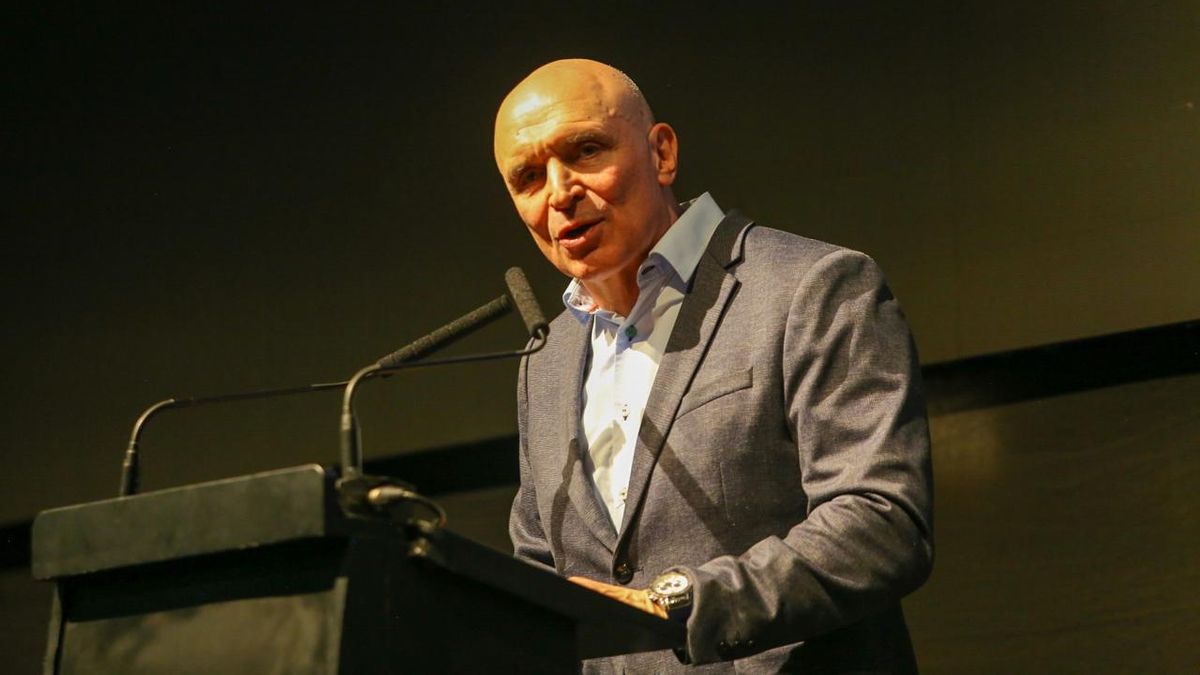What will the new monetary regulation letter be like?
For now, in official offices, they point out that Work is underway to release it this Thursdayafter the BCRA Board of Directors meeting, the regulations for the creation of monetary regulation letters. This is the instrument that will replace the remaining stock of around $15 billion of passive passes, as a way to complete the debt handrail from Reconquista 266 towards Yrigoyen 250 which had already accelerated in recent months.
The announcement late on Friday was limited to that. It announced that, in the second stage of the economic programme, the remunerated liabilities of the government will be completely eliminated. BCRA to close the monetary emission tap that implies the payment of the interests of these instruments. In exchange, Caputo and Bausili said, the banks will be given a new letter whose rate will be managed by the Central Bank but which will be included in the balance sheet of the Central Bank. Treasurethat will be responsible for paying the interest.
The officials’ message opened up several accusations over the following days. In addition to criticism that the gauntlet of the demands on the exhaustion of the exchange rate scheme was not taken up, concerns were transferred to the fiscal front: Various private sources have estimated that the Treasury will need to make an additional adjustment of between $600 billion and $800 billion per month. to meet those interests (or more if there is a considerable increase in the rate). On the other hand, alerts were raised about a non-optional migration (as it had been until now) of the banks’ assets from “BCRA risk” to “Treasury risk”, always considered less safe and even more so after the “reprofiling” of 2019. A sensitive issue if one takes into account that the other side of that money is the deposits of the savers.
On this last point, Caputo and Bausili tried to bring calm during the 40-minute meeting held on Monday with some 80 bank representatives and other officials. There, the head of the monetary authority said that, although the new bills will be liabilities of the Treasury, they will be managed by the BCRA, which will be in charge of managing the liquidity in a similar way to the current repos. And he explained that the pesos that the treasury receives from the placement of the monetary regulation bill will be deposited in the account that it has in the Central Bank as a guarantee.
In response to the query Ambita high official source added that There will be a regulation by which banks will have an option to repurchase their funds at technical value from the BCRAthat is, a kind of “bid”, as it is known in financial jargon. “It assures them that it is a one-day risk against the BCRA,” he said.
By having that “bid”it will be regulated that New bills do not count towards Treasury financing limits that financial institutions have. The same thing happens with the securities secured by “puts,” which represent a debt mass of close to $20 billion that is on the verge of execution and that the Government now intends to dismantle through a bank-by-bank negotiation.
What other characteristics will the new bills have? According to Ámbito, they will be exclusive to banks. They will accrue a floating interest coupon that will be adjusted by the monetary policy rate and, as they are issued by the Treasury, they will not pay Gross Income Tax (something that does occur with the transfers in several districts). In principle, they would have a capitalizable interestas well as the LECAP: if this were to materialize, it would allow the Government to do the accounting trick that does not include them in the tax result.
“Of course It is simply an accounting issue (because the fiscal cost is still there, regardless of how it is calculated), but if the Government wants to continue showing a fiscal surplus, it will have to limit the payment of interest for the replacement of the passes,” the consulting firm stated. 1816 in a report and gave an example: “If the treasury had $30 billion placed at 0% in the BCRA and paid an interest rate of 4.25% per month and that was recorded above the line (that is, if it were not capitalized), it would imply a fiscal cost of almost $1.3 billion per month.” A cost that, in any case, will add to the strong adjustment that the Executive is already carrying out and that This will mean further cuts to other budget items in order to allocate these resources to debt repayment.
Given the concerns of bankers, some of these points were answered at Monday’s meeting; others were not. Other aspects are still to be resolved. Nor was there any talk of the placement deadlines for the new bills. In the last few hours, doubts persisted in several City entities beyond the statement of support published by the entities that group together the private banks. Some hoped that there would be some kind of additional incentive to accept the operation.
Dollar, currency controls and new bills: market fears
Orlando Ferreresone of the most consulted economists by the city and large companies, was categorical in his evaluation of the measure: “On Friday, a kind of Bonex plan was announced for the banks. With another name, with another type of debt, but it is the same thing that Erman González did with the Bonex plan because the debt that belongs to the BCRA is transferred to the Treasury. That is what the markets did not like.” The reference is to the forced exchange implemented in December 1989 by Carlos Menem, which at that time fell on the fixed terms of savers. Although he said that the risk for deposits is not of the same magnitude as 35 years ago, because “the situation is much softer,” he clarified that it exists. “The banks were not very happy when they saw that it was an unavoidable obligation,” added Ferreres, interviewed by Radio 10.
Asked whether the fact that there was a one-day bid with the BCRA mitigated the impact, as officials claim, the economist considered that it is still a disruptive solution for the financial system. “I see the bankers are worried,” he said.
The financial analyst Christian Buteler considered that this debt handrail It is not the solution to the problem of passive remuneration, but a way of “hiding reality”. He argued that what it allows is to record those pesos as Treasury debt, but if at some point they have to be cancelled, that will be done through the BCRA with monetary expansion “because the Treasury does not have the capacity to generate two surplus monetary bases.” “The day that expenditures exceed income, we will see the reality,” he said in his X account.
Aside from what the monetary announcement itself does, The bulk of concerns are focused on the exchange rate schemewhich the market, the IMF and a good part of economists see as exhausted. The Central Bank is no longer buying reserves, devaluation pressures have been activated, the gap has exceeded 50%, the most complicated quarter for the flow of foreign currency is coming, debt payments in dollars are accumulating and the rise in country risk overshadows the possibilities that the Caputo plan will lead to an opening of external financing in time to refinance the large maturities of 2025.
“The market was expecting an announcement of exchange rate policy, something that would give a clue about the restrictions,” an operator told this newspaper. Caputo ratified the 2% “crawling peg,” the dollar blend (which the Fund is asking him to eliminate so that 20% of exports that currently go to the CCL enter the reserves) and said that the exchange rate restrictions will be removed in a third stage of the program, which seems to be moving further away as the reserves front becomes more complicated and the gap widens.
The minister told the bankers that in the future currency competition, the weight will not disappear and even hopes to strengthen it. One of the attendees interpreted that Washington ended up veiling dollarization and that now the Government is considering neo-convertibility.
Source: Ambito




